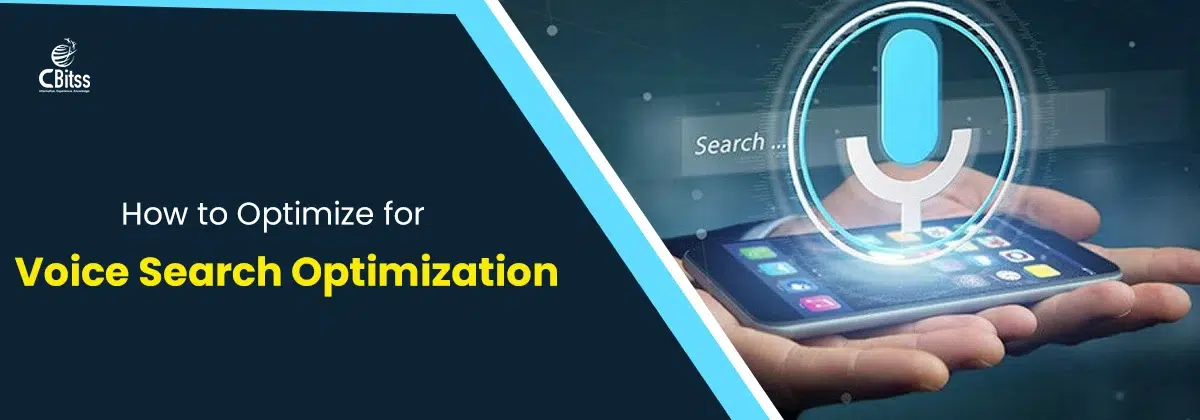Table of Contents
ToggleThe way people search online has changed forever. Rather than typing a search in Google, increasingly many people are simply talking or talking to their phone, smart speakers, or even an automobile. Are you one of the millions now talking to your phone instead of typing? This shift has made voice search optimization one of the most important parts of digital marketing today.
But what exactly does it mean, and how do you do this in a world where nearly every device listens?
But what is it, and how to optimize for voice search in the age where everything listens? Through this article, you will discover all you need to know, including what it is, strategies, weaknesses, and future opportunities.
So, what really is this Optimization using Voice Search?
To define this, it is the process of improving your site to appear in voice searches performed by consumers. Instead of typing “best pizza near me,” a user might ask Siri or Alexa, “Where’s the best pizza place nearby?”
Unlike traditional searches, voice queries are more explicit, conversational, and usually structured as a question. That is why companies begin to question how they can optimize a voice search framework that does not sound unnatural.
Why Voice Search Matters in 2025
Voice search is not a trend; it is the next thing in way users will engage with the device. In 2025, billions of devices around the world will be voice-enabled.
Whether it is on your smartphone or smart TV, or even the refrigerator, consumers are using voice as a method of convenience. To businesses, this implies having to change the ways of doing business in order to be optimized in terms of voice search. Missing out could mean losing potential customers who no longer type but ask.
And this is why it is important:
- Quicker response time: The audience prefers prompt replies rather than scrolling.
- Hands-free: Can be helpful in the kitchen, on the road, or when busy.
- Local intent: Local searches by voice are on the rise, and that enhances local SEO.
How Voice Search Works
AI transforms the voice of the person who is talking to a digital assistant into text. Search engines then examine the request and offer the most applicable response.
Compared to typed searches, which provide a list of several search results, voice tends to provide a single answer. That is why services for optimizing for voice search are on the rise—businesses must consult an expert to be the answer voice assistants choose.
When someone uses a digital assistant, their voice is converted into text through AI. Then, search
How to Optimize for Voice Search
The question marketers frequently ask is: What’s the best way to get your brand into voice search results? In case you ever wondered the same, here’s some good news. It’s not about reinventing your SEO, but adjusting it to natural, spoken queries. The main steps are the following:
- Pay attention to conversational keywords: Be very specific and use long-tail keywords, question-based keywords, such as What is the best…, How can I…
- Create an FAQ page: This form is similar to that used by human beings in their search.
- Local SEO optimization: Attach the key phrase with the words near me and modify the Google Business Profile.
- Organize data with structure: Structuring data with Schema markup makes Google understand your information better.
- Increase the speed of the site and mobile readiness: Voice searches are performed primarily on mobile.
When you implement these steps, you also optimize your voice search as well as your SEO in general. Then, search engines filter results much like they do for social media marketing or standard searches.
Optimizing for Voice Search: Advanced Tips
Remember, simple strategies are not enough, and you should dive deeper to optimize your business toward voice search in 2025:
- Multilingual preparedness: Voice-based queries are frequently intermingled with languages (such as Hinglish or Spanglish). This increases reach with preparation.
- Answers on snippets: The predominant majority of voice assistants gather answers through the so-called position null of Google. Write concisely and give definite answers.
- Voice commerce integration: Voice-powered shopping is on the rise as people find it convenient to use Alexa or Google Assistant to shop. Brands should also make product descriptions voice-optimized.
- Accessibility advantages: Optimizing for voice search makes the browsing experience easier for individuals with disabilities- maximizing voice search will also increase accessibility.
This is similar to how YouTube growth strategies or web designing courses adapt to modern platforms.
Upgrade your skills with our certified course in voice search optimization.
The Role of Voice Search Optimization Services
Not all businesses have the ability or resources to go it alone with voice strategies. This is where voice-search strategy services come in.
These services tend to provide:
- Conversation keyword research
- Technical changes of SEO (schema, mobile, page speed)
- Optimising voice commerce
- Smart assistant local SEO plan
When it comes to making voice a primary method of customer search, collaboration with professionals is what can help many companies remain on the cutting edge, similar to hiring digital marketing experts.
Challenges in Optimization using Voice Search
With many benefits available, there are also challenges:
- Limited visibility: Unlike a desktop, voice usually gives one answer, not a list.
- Accuracy issues: Accents, dialects, and slang can confuse AI.
- Competition for snippets: Getting to “position zero” requires more effort.
- Privacy concerns: People worry about devices always “listening.”
Marketers who figure out how to do this while addressing these issues will have the advantage.
Gain the in-demand voice search optimization skills top companies look for.
What Others Don’t Tell You About Voice Search
The majority of guides concern keywords and snippets. But these are some areas that are not considered:
- Assistant AI Bias: Algorithms may only look at some particular brands or sources.
- Data Gaps: Voice search analytics have limited data compared to the classic ones.
- Cross-Device Experience: A person could initiate a search on his or her phone and complete it on a smart speaker. Businesses must ensure consistency.
- Voice + Visual Combo: Voice and visual combos such as smart displays (Google Nest Hub) combine the two channels-the content must be suited to both.
This trend is just like the evolving scope of web designing in India and Python programming mastery that adapt with technology.
The Future of Voice-Activated Search
Optimization Voice searches will not be just on phones and speakers anymore in the future. It will fuel queries in automobiles, consumer gadgets, and even smart devices. Voice search brands will future-proof their digital presence by optimizing now.
Predictions for the future:
- Voice shopping boom: Voice assistants were used to spend billions.
- Super-personalized response: AI will personalize outcomes to users.
- Multimodal search: Combining voice, touch, and visuals.
- Additional laws: More regulations will be employed on privacy and the use of data.
This shift mirrors other booming industries like Indian YouTubers and graphic designing careers.

Final Thoughts
So, what is preparing for voice search all about? It is more than just keywords. It is where you get the content to be in a position where it is human speak language.
Whether you’re exploring how to do this, starting to prepare your site for voice search, or looking into voice search optimization services, the truth is clear: the future of search is voice.
Now is the moment to move. Optimize for voice search NOW, and make sure your business has the visibility it requires in a world that is moving to voice-first—just like those preparing for digital marketing careers.

Sukhamrit Kaur
Sukhamrit Kaur is an SEO Manager. She combines creativity with strategic SEO expertise to simplify complex ideas and drive online visibility. Passionate about digital growth, she helps businesses achieve measurable results through data-driven strategies, impactful content, and optimized search performance.







